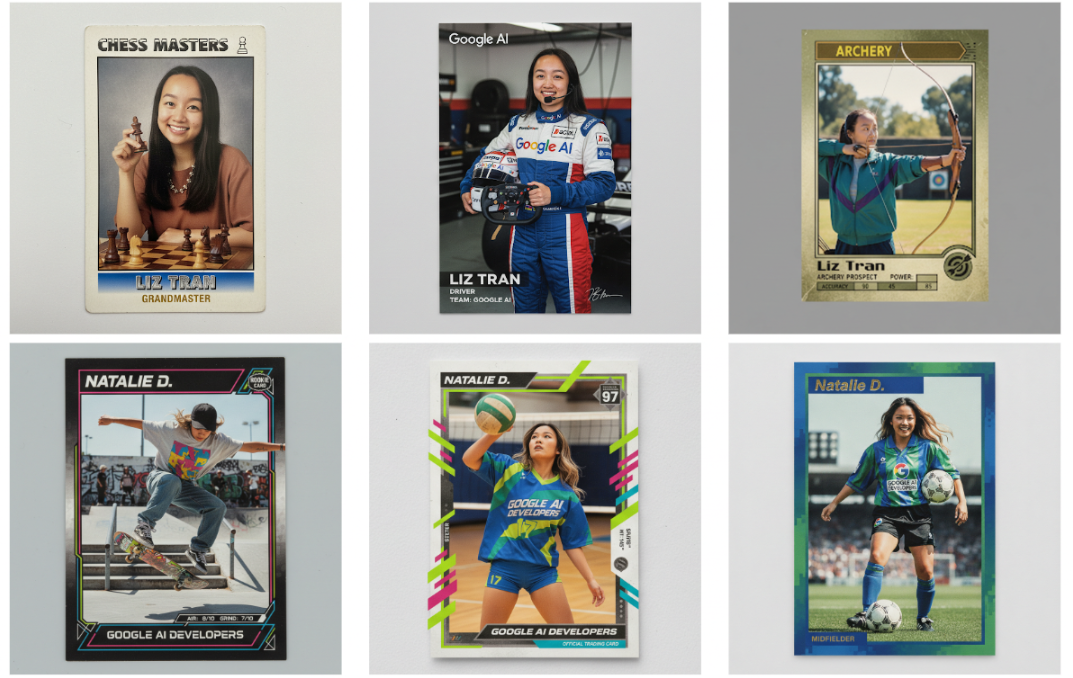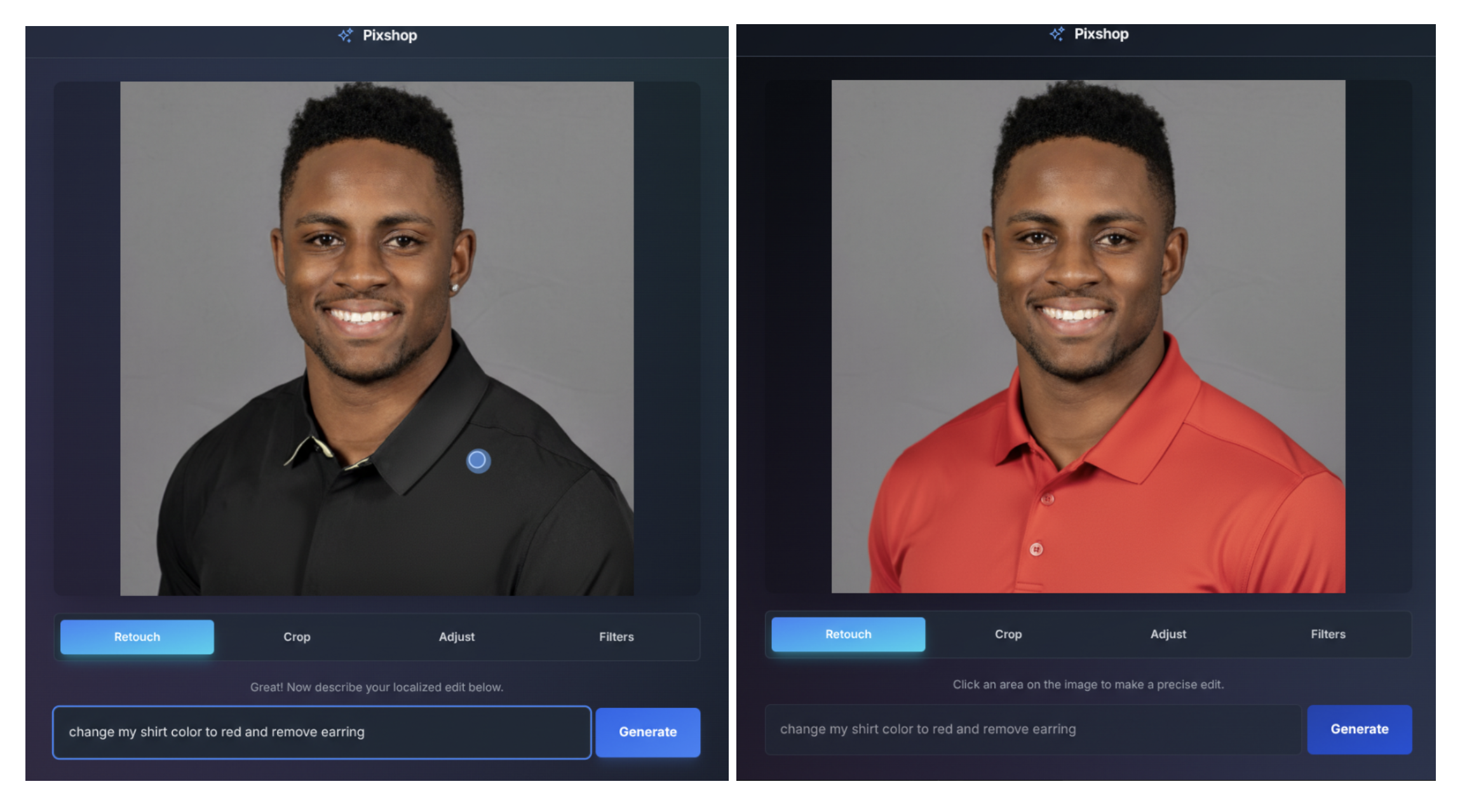Introducing Gemini 2.5 Flash Image: A Cutting-Edge AI Image Model
Today marks an exciting milestone in the world of AI image generation and editing. We’re thrilled to introduce Gemini 2.5 Flash Image (also known as “nano-banana”)—our state-of-the-art model designed to transform how you create and edit images. This powerful update brings a host of new capabilities: blending multiple images into one, keeping characters consistent across different scenes for richer storytelling, making precise edits using simple natural language, and even leveraging Gemini’s vast world knowledge to enhance your creative process.
Earlier this year, when we launched native image generation in Gemini 2.0 Flash, users loved its speed, affordability, and ease of use. But you also shared valuable feedback: you wanted higher-quality images and more control over your creative work. Gemini 2.5 Flash Image is our response to that feedback—a model built to deliver on both quality and flexibility.
Where to Access Gemini 2.5 Flash Image
Gemini 2.5 Flash Image is available right now, and it’s easy to start using, whether you’re a developer or part of an enterprise team:
-
For developers: You can access it through the Gemini API and Google AI Studio. Google AI Studio is a great place to experiment, build, and test your ideas quickly. -
For enterprises: It’s available via Vertex AI, Google’s platform for enterprise-grade AI solutions.
When it comes to pricing, Gemini 2.5 Flash Image is designed to be cost-effective. It’s priced at 0.039. All other input and output types (like text) follow the standard Gemini 2.5 Flash pricing structure.
Exploring Gemini 2.5 Flash Image: What It Can Do
To make it even easier to build with Gemini 2.5 Flash Image, we’ve updated Google AI Studio’s “build mode” with new features (and more updates are on the way). With these tools, you can quickly test the model’s capabilities by creating custom AI-powered apps, remix existing templates, or bring your ideas to life with just a single prompt. Once you’re happy with your app, you can deploy it directly from Google AI Studio or save the code to GitHub.
Want to try it out? Just type a prompt like, “Build me an image editing app that lets a user upload an image and apply different filters,” or pick one of the preset templates and make it your own—all for free!
Let’s dive into the key capabilities of Gemini 2.5 Flash Image:
1. Keeping Characters Consistent: Perfect for Storytelling
One of the biggest challenges in image generation is making sure a character or object looks the same across different prompts and edits. For example, if you’re creating a story with a main character, you want that character to look recognizable whether they’re in a forest, a city, or wearing different clothes. Gemini 2.5 Flash Image solves this problem.
With this model, you can:
-
Place the same character in various environments (a beach, a mountain, a classroom) while keeping their appearance consistent. -
Show a single product from multiple angles in different settings (like a couch in a living room, a bedroom, and an office) without changing the product itself. -
Create consistent brand assets, such as logos or mascots, across all your marketing materials.
To show how this works, we built a template app in Google AI Studio. You can customize this app easily and add your own code to fit your needs. It’s a great way to see firsthand how character consistency works.
Beyond characters, the model is also great at following visual templates. Developers have already started using it for things like:
-
Real estate listing cards, where the layout stays the same but the property photos change. -
Uniform employee badges, ensuring all badges have the same design while featuring different staff photos. -
Dynamic product mockups for entire catalogs, where one base design is used for hundreds of products.
2. Prompt-Based Image Editing: Edit with Simple Language
Gemini 2.5 Flash Image makes editing images easier than ever—you don’t need complex software skills. Instead, you can use simple natural language to make precise, targeted changes to your images.
Here are just a few things you can do with a quick prompt:
-
Blur the background of a photo to make the main subject stand out. -
Remove a stain from a t-shirt in a product photo. -
Delete an unwanted person from a group picture. -
Change the pose of a subject (like making someone wave instead of stand still). -
Add color to a black-and-white photo.
The possibilities are nearly endless—whatever edit you can describe in words, the model can try to bring to life.
To demonstrate these editing powers, we created a photo editing template app in AI Studio. This app includes both a user-friendly interface and prompt-based controls, so you can edit images in the way that’s most comfortable for you.
3. Native World Knowledge: Smarter Image Creation
In the past, image generation models were good at making pretty pictures, but they often lacked a deep understanding of the real world. For example, if you asked for “a picture of a polar bear in the desert,” a model might create that image without understanding how unusual or unrealistic that scenario is.
Gemini 2.5 Flash Image is different. It uses Gemini’s built-in world knowledge to create more meaningful and accurate images. This opens up new possibilities for how you can use the model.
To show this off, we built a template app in Google AI Studio that turns a simple canvas into an interactive learning tool. Here’s what it can do:
-
Read and understand hand-drawn diagrams (like a child’s drawing of the solar system) and turn them into detailed, accurate images. -
Answer real-world questions related to images (like “What’s the name of this animal?” when shown a drawing of a kangaroo). -
Follow complex editing instructions in one step (like “Turn this drawing of a house into a futuristic version with solar panels and a garden on the roof”).
This blend of creativity and real-world understanding makes Gemini 2.5 Flash Image a powerful tool for education, design, and more.
4. Multi-Image Fusion: Combine Images Seamlessly
Ever wanted to put an object from one photo into another scene? Or mix the color scheme of one image with the layout of another? Gemini 2.5 Flash Image can merge multiple input images to create something new and cohesive.
With multi-image fusion, you can:
-
Place a piece of furniture (like a chair from your living room) into a new room design. -
Restyle a room using the color scheme or texture from another image (like making a bedroom look like it’s decorated with beach-themed colors from a photo of the ocean). -
Combine elements from two or more images into a single, natural-looking scene (like putting a friend’s photo into a picture of a famous landmark).
To showcase this feature, we built a template app in Google AI Studio. With this app, you can drag products or objects from one image into a new scene and instantly create a realistic, merged photo. It’s perfect for designers, marketers, or anyone who wants to visualize combinations quickly.
Getting Started with Gemini 2.5 Flash Image
Ready to start building? Here’s how to begin:
-
Check out the developer docs: Our developer documentation has all the details you need to start using Gemini 2.5 Flash Image, including guides, examples, and technical specifications.
-
Try the preview: The model is available in preview now via the Gemini API and Google AI Studio. We’re working to make it stable in the coming weeks, so keep an eye out for updates.
-
Use the template apps: All the demo apps we’ve mentioned (for character consistency, prompt editing, world knowledge, and multi-image fusion) were built using Google AI Studio. You can remix them, customize them with your own prompts, or use them as inspiration for your own projects.
-
Partner platforms: We’re also working with leading developer platforms to make Gemini 2.5 Flash Image more accessible:
-
OpenRouter.ai is partnering with us to bring the model to their community of over 3 million developers. It’s the first image-generating model on their platform (which hosts over 480 models). -
fal.ai, a top platform for generative media, is also making Gemini 2.5 Flash Image available to its users.
-
Important Note: AI-Generated Image Identification
All images created or edited with Gemini 2.5 Flash Image include an invisible SynthID digital watermark. This watermark helps identify the image as AI-generated or edited, ensuring transparency and trust.
Example Code: Generating an Image with Gemini 2.5 Flash Image
If you’re ready to dive into coding, here’s a simple example of how to use Gemini 2.5 Flash Image with Python. This code creates an image based on a prompt and can even use an existing image as part of the input:
from google import genai
from PIL import Image
from io import BytesIO
# Initialize the client
client = genai.Client()
# Create your prompt
prompt = "Create a picture of my cat eating a nano-banana in a fancy restaurant under the gemini constellation"
# Load an existing image (optional)
image = Image.open('/path/to/image.png')
# Generate the image
response = client.models.generate_content(
model="gemini-2.5-flash-image-preview",
contents=[prompt, image],
)
# Process the response
for part in response.candidates[0].content.parts:
if part.text is not None:
# If there's text in the response, print it
print(part.text)
elif part.inline_data is not None:
# If there's an image, save it
image = Image.open(BytesIO(part.inline_data.data))
image.save("generated_image.png")
Let’s break this down in simple terms:
-
First, we import the tools we need (like genaifor Gemini,Imagefor working with images, andBytesIOfor handling image data). -
We set up a connection to the Gemini client. -
We write a prompt describing what we want to create (in this case, a cat eating a “nano-banana” in a fancy restaurant under the Gemini constellation). -
We can optionally load an existing image to include in the generation (maybe a photo of your actual cat!). -
We send the prompt and image to the Gemini 2.5 Flash Image model. -
Finally, we check the response: if there’s text, we print it; if there’s an image, we save it as “generated_image.png.”
What’s Next for Gemini 2.5 Flash Image
We’re always working to make Gemini better, and we have big plans for Gemini 2.5 Flash Image. Here’s what we’re focusing on next:
-
Improving long-form text rendering in images (like making sure text on signs or books in images is clear and accurate). -
Making character consistency even more reliable, so your characters look the same no matter how many edits you make. -
Enhancing factual representation, ensuring that small details in images (like the shape of a historical object or the colors of a flag) are correct.
We rely on your feedback to make these improvements. If you have ideas, questions, or run into issues, please share them in our developer forum or on X.
Final Thoughts
Gemini 2.5 Flash Image is more than just an image generation tool—it’s a creative partner that understands your needs, speaks your language, and helps bring your ideas to life. Whether you’re a developer building the next big image app, a marketer creating engaging content, or someone who just loves to experiment with AI, this model is designed to make your creative process easier and more fun.
We can’t wait to see what you build with Gemini 2.5 Flash Image. The possibilities are as big as your imagination!



